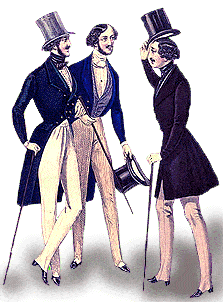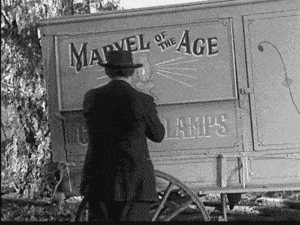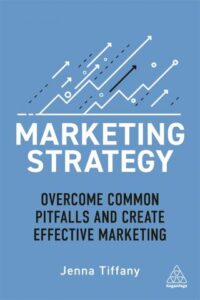I’d like to talk to you about a marketing problem that drives me mad: the Price-Slash Cycle. I think this is something that’s frustrated every marketer at one point or another – but it keeps on happening! How did we reach this point? And why?
But I’m getting ahead of myself. Let me start by explaining what I mean by the Price-Slash Cycle. Here’s how I described it in my upcoming book:
“The retail marketing calendar is typically filled with price-cut events and seasonal sales. So much so that things like the DFS sale are a running joke and have been ‘ending soon’ for over 18 years! (Comedy Central, 2020).
And it’s not as if these sales drive profits. All they do is shift revenue around the calendar. High sales in January draw from a slump in July, and so on. Where is the long-term vision in a constant reel of sales and slumps?”
This perpetual round of price cuts is not marketing. It’s just sales (literally!) Sure, customers love a bargain. But assuming that bargains are the only thing customers want from their brands is not just incredibly lazy, it’s fundamentally wrong.
Where’s the care? Where’s the creativity? Where’s the foresight? Where, in a word, is the strategy?
To understand how we got here and how we can break the cycle, let me take you through the history of marketing:
Simple Trade Era (pre Industrial Revolution)

This also meant that craftspeople didn’t always have enough stock to ride off to market and make a profit. Instead, they’d trade their limited produce (or skills) with other crafters and growers – creating what’s known as a barter economy. This system of payment-in-kind and IOUs was so ingrained that people in England could even pay their taxes in turnips!
Things got more commercial as cities expanded but still, for hundreds of years, entire economies were based on IOUs.
Production Era (1860s-1920s)

When things ramped up, they ramped up fast. The Industrial Revolution wiped out centuries of humdrum barter-trade in a matter of decades.
The Industrial Revolution gave the world faster, cheaper ways to make things. Rather than one cottage weaver taking days to make ten yards of cloth, a machine-handler could make hundreds of yards of cloth in a few hours. Multiply that by an entire factory of machines and – well, you can see how some people made a lot of money.
The Industrial Revolution killed the problem of supply. But it created a new problem – demand. When people could get whatever they needed quickly, easily, and cheaply, it was hard for stock-saturated companies to compete.
If the demand wasn’t out there, it would have to be created. Enter the salesman.
SALES ERA (1920S-1940S)

When people were spoiled for choice, simply providing a product was no longer enough. Manufacturers needed to persuade people that their product was the best on the market.
Part of this involved bringing the product to the customers rather than the other way around. Salesmen were employed to travel around, pushing wares and explaining why their company’s offering was better than all the others.
When working out sales strategies, companies quickly realised that their own image was as important as that of their product. If they were going to win against the competition, it wasn’t enough to have the better product – they also had to be the better company.
So, companies became brands. They developed distinct imagery, voices, and personas. Their salesmen competed to look the most dapper, have the best patter, and – crucially – to be the most popular with customers.
Before this era, companies and customers had been separated by retailers. A factory would send a shipment to a shop and collect their money without ever encountering an actual customer. The sales era changed all that. Traveling salesmen like ‘Father of Advertising’ David Ogilvy really got to know their customers. And it transformed the way they thought about commerce.
Ogilvy and people like him realised that sales was just the tip of the iceberg. Customers wanted more. They deserved more. And brands could give them more – through marketing.
MARKETING DEPARTMENT ERA (1940S-1960S)
The Second World War gave brands the structure and direction to develop their sales teams into full blown marketing departments.
Brand heads took what they’d learned about leadership and propaganda during the war, and applied it to their companies. Marketing departments were created that operated a lot like military units. They were dedicated, efficient, and hierarchical.
Having entire teams dedicated to marketing allowed brands to push the envelope. Marketing became highly professional, fuelled by advances in media technology (like television).

However, this military mindset was also inflexible. Department heads preferred quick wins to long-term gains, and the hierarchical structure made it hard for companies to change from within. The price-slash cycle was created to get those quick wins – and plenty of companies have been stuck in that cycle ever since.
MARKETING COMPANY ERA (1960S-2010S)

By the 1960s, it was widely accepted that every business existed to serve customers. The customer had truly become king.
This customer focus brought marketing front and centre in all business endeavours. Simple marketing departments no longer cut the mustard – entire marketing companies were needed. The era of Don Draper was upon us.
Marketing companies were (and still are) powerhouses of customer knowledge. They are responsible for some of the most iconic marketing and branding of our time, ranging from Nike’s “Just do it” to political slogans like the Obama campaign’s “Yes we can”.
They achieved all this through strategy.
Marketing companies didn’t just string tactics together as marketing departments had. They came up with fully-fleshed, well-researched strategies. And those strategies built some of the world’s most recognisable, most profitable brands. Brands like Coca-Cola, Apple, Amazon, Microsoft, and more.
The rise of service industries helped marketing companies to develop their relationship marketing skills. With no physical ‘product’ to sell, marketing companies had to ‘sell’ the brand. They achieved this through relationship-building, content marketing, thought-leadership, and more.
According to traditional theories of marketing, we are still in the Marketing Company Era. However, it’s pretty clear to every modern marketer that things have come a long way since Don Draper’s time. New technology and a fast-changing world are speeding us into a whole new era of marketing.
SOCIAL/MOBILE MARKETING ERA (2000S-PRESENT)
Much like the Industrial Revolution 200 years ago, the Digital Revolution is changing the world fast. The rise of the internet provides challenges and opportunities for both brands and marketers.

How do you reach a digitally distracted customer? How can we use data, AI, and social media to market our brands? What marketing innovations are waiting just around the corner?
This era is extremely exciting. If you ask me, there has never been a better time to be a marketer. Fun new tech comes out all the time, customers have more agency than ever, and we’re in the middle of an amazing creative boom. It’s awesome!
However, it’s important not to get caught up in the shiny tech of the Social/Mobile Era. That tech might be capable of great things – but if it’s not built into a strong marketing strategy, it won’t work like it should.
My upcoming book will teach you everything you need to know about strategy in a simple, easy-to-understand way. It’s proven very popular with some of the top names in marketing – here are what a couple have to say about it:

“This text is a must-have for marketing strategy professionals and students alike. Its unwavering focus on application of marketing theory using practical templates and insightful cases studies, shows you how to put theory into practice to create effective marketing strategies.”
Alicia Farrell, University Marketing Lecturer

“A key marketing strategy manual to accompany you from the classroom to the boardroom.”
Rachel Aldighieri, Managing Director, DMA (Data & Marketing Association)
To break out of the postwar era and propel your marketing into the future, pre-order my book today!
BREAK OUT OF THE POSTWAR PRICE-SLASH MINDSET WITH MARKETING STRATEGY
It’s important to understand the past if we’re going to advance. I could have gone into way more depth here – but I cover the history of marketing in the first chapter of my new book, so you know where to turn if you want more!
The way I see it, the root of the Price-Slash Cycle is buried in the past. Specifically, the postwar past.
Just as marketing was beginning to move beyond sales tactics, the very military efficiency that brought marketing to the fore also implanted an issue that would dog marketers for generations. The need for quick sales, without strategic foresight, left many brands stuck in an eternal round of discounts.
To be fair, this worked for a bit. People do love a sale! But we’re two marketing eras on from the dawn of the Price-Slash Cycle, and people are wise to it by now. More than wise.
Everybody knows that the DFS Sale has been going on for long enough!
The problem is that many brands are stuck in the postwar mindset. They want those quick but temporary wins – not the strong, durable customer relationships that will actually bring consistent profit.
How do we move beyond this? I’d argue that the way to beat the Price-Slash Cycle is to advance your brand from the Marketing Department Era to the Marketing Company Era and beyond.
The way to do that is to start strategising.
Strategy will help both you and your bosses to see the bigger picture. It will show you what customers really want, and enable you to reach them in ways that have way more value and meaning than a simple sale. Strategy will pull your brand out of the postwar doldrums and into the brave new social/mobile world.
Now all you have to do is learn how to create a strategy. Luckily, I have just the resource for that!

